Dear Lifehacker, I want to share my photos with friends, but I’d prefer to create my own portfolio and gallery rather than trust the Facebooks and Yahoos and Googles of the world to host them for me. How can I take control of my photos and host them myself?
Thanks, Prescient Photographer
Photos by runran
Dear Prescient Photographer,
There’s a point in most photographers’ careers where they want to build a personal gallery on their own site, rather than host their photos on Flickr, Picasa, or any of our other favourite photo hosting services. Make no mistake, Flickr, Picasa, Smugmug and other photo hosting sites offer great storage and services for people looking to share their pictures online, quickly and easily, along with agreements to help them licence their photos if they want to. Plus, they’re largely free, and super-easy to use and upload photos to.
However, if you don’t want to wake up one day to find your galleries missing because someone reported them or someone decided you’ve broken some arcane rule, or if you’d rather build your own portfolio rather than allow Flickr or Picasa to do it for you, you have options. Let’s take a look at a few.
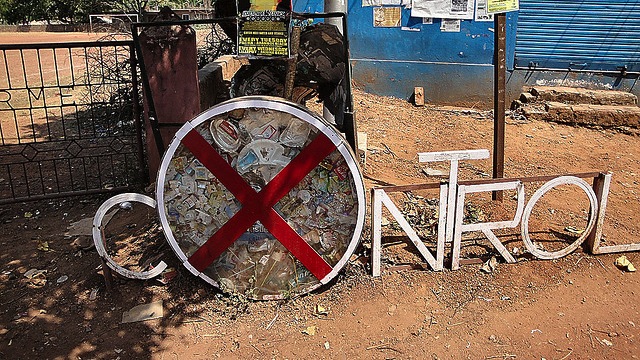
A Note About “Control” Over Your Photos
Before you begin, there’s one thing you’ll definitely need — a good web hosting company or a home server or NAS that you’re willing to run a small web server from (and an ISP that won’t care too much that you do). If you’re going to host your photos yourself, you’ll need somewhere to put them. If you go the web host route, or even if you opt to use a service like Amazon AWS, remember you still have to deal with the terms and conditions of your host.
If you host your own photos, your ISP may or may not have something to say about it. Keep that in mind if you’re under the impression that DIY means you only have to answer to yourself. It’s not quite total, but it’s definitely much more than a free photo host.
Also, if the reason you want to take control is to stop people from using your photos in ways you don’t want, remember that this is the internet we’re talking about. If someone wants your photo and they’re not keen on following the rules to use it properly, they’ll get it — the best you can do is keep an eye on how people are using your media and embrace licensing schemes like Creative Commons, that give you the flexibility to offer what you want in a way people can use, but still control your licence, grant it when you choose, and be compensated for it when you want to be.
Choose the Best DIY Image Gallery Solution for You
There are plenty of great, free, and open-source (or GPL-licensed) photo gallery tools to choose from. Most offer similar features, like automatic photo resizing, restrictions on sharing and downloading, watermarking, support for multiple languages, and the ability to make galleries private, public, password protected, and so on. Here are a few worth checking out:
[clear]
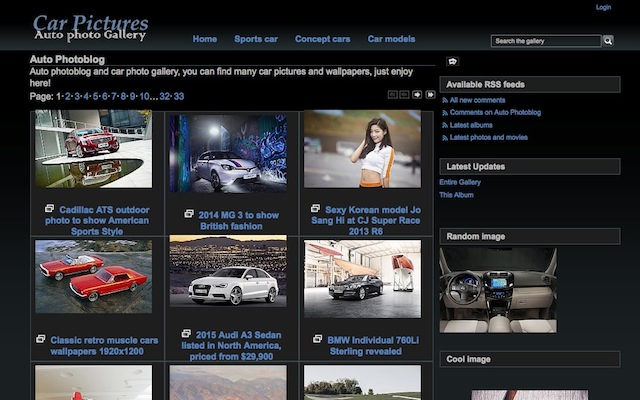
Gallery Project
Gallery was one of the first self-hosted photo gallery tools that anyone could install and set up. Dreamhost offers it as a one-click install, so if you’re hosted with them, they make the setup and update process easy. It’s feature-packed, and while it can be a little tricky to manage, it is flexible, skinnable, supports photos and videos and has a built-in image editor so you can do basic tweaks to your photos after they’ve been uploaded. Plus, there’s a host of third-party plugins available for it to extend its features.
I used to use Gallery, and found it easy to install and easy to configure, but it was a little tricky to update when new patches and updates came out, and it was difficult to troubleshoot and get everything working just the way I wanted to — it was definitely a bit quirky, but someone with a more patient hand could probably have powered through those issues. I still know a number of people who use Gallery for their professional portfolios and love it.
[clear]
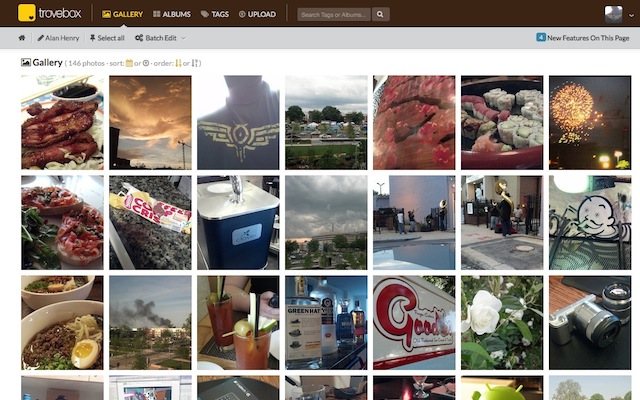
Trovebox
Trovebox is the result of the OpenPhoto Project, and while you can use Trovebox as a gallery service like Flickr or Picasa (in fact, we’ve shown you how to use Trovebox to pull all of your photos from around the web into one place), Trovebox is also open enough that you can store your photos anywhere you choose and use their front-end instead. The beauty of Trovebox is that you can store your photos anywhere you like without having to deal with databases or app engines, and Trovebox gives you an easy tool to organise them, share them, and even restrict access to them as you see fit.
If you’re the type who likes to do your own development, you can work with Trovebox’s open APIs to customise your gallery and its experience so it works the way you choose. You always own your photos, so you don’t have to upload them anywhere you don’t want them hosted — Trovebox simply provides the front-end, and handles everything from editing, tagging, sharing, and security. You can even invite other people to manage your galleries too. Sadly, Trovebox isn’t free the way it used to be, but their plans are pretty generous for what you get, so if you’re willing to spend a few bucks, you get some solid features for little setup.
[clear]
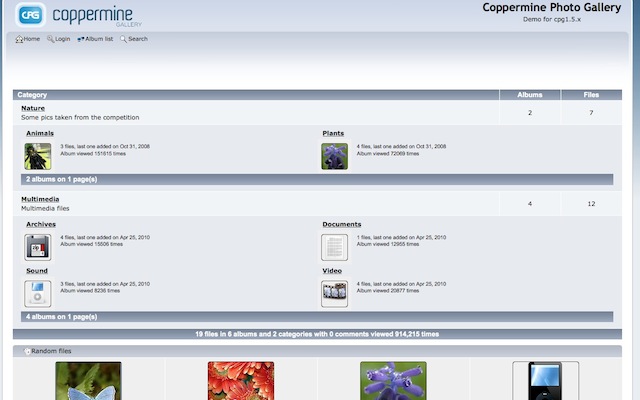
Coppermine
Coppermine is another of the web’s oldest and most popular gallery platforms. Like Gallery, you’ll need a web host with the right backend to support it. It’s a bit trickier to really customise and get working just the way you want, but for your effort you get a really powerful photo gallery/web forum suite. Coppermine is packed with features: It supports image editing, videos, access restrictions and security controls over galleries and photos, skins and themes, multiple languages, and more. Additionally, Coppermine has the ability to restrict specific galleries and forums to specific users, allow users to leave comments and offer feedback, or blow the doors wide open and work like a flat gallery.
You’ve probably seen a Coppermine gallery even if you didn’t know it at the time. While it’s really easy to download and install, it takes more effort to get it looking different from every other Coppermine install on the web. Most galleries running Coppermine use some of its basic templates and settings — if you’re willing to put time into it, you’ll get a gallery that’s truly unique. Alternatively though, it may be overkill for a lot of people looking for something simple without the bells and whistles that Coppermine offers.
[clear]
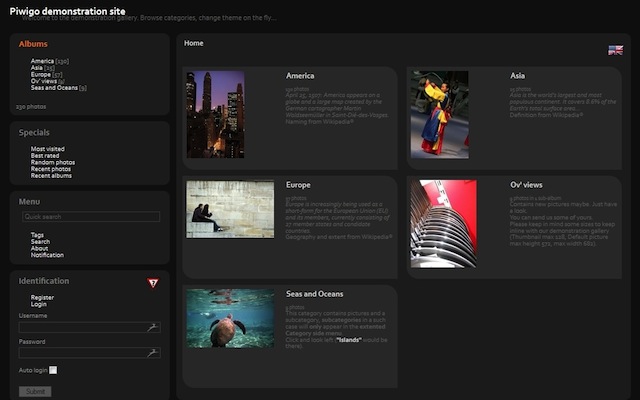
Piwigo
Piwigo is designed to be fast, free, and flexible. It’s frequently updated by a passionate community of developers and users who swear by it. It’s free, GPL-licensed, and can be installed on your own server or web host easily. If you’re looking for something easy to set up with all the features you would expect from gallery software, it’s worth a look. It does everything you expect: galleries, nested galleries, thumbnails and image previews, automatic photo resizing, basic editing tools, and more — but it also has more customisation features than a lot of other tools, so it’s easy to make a gallery that’s truly unique and interesting.
You also get privacy controls and features so only the people you want to see your photos see them, custom URLs, an open API you can use to connect Piwigo to other web tools, and tons of third-party plugins that extend Piwigo’s features. If your goal is to get a gallery up and running quickly but you also want something that doesn’t look like all the other photo galleries all over the web, Piwigo is worth a look. They even have a working demo gallery to explore that shows off its features.
[clear]
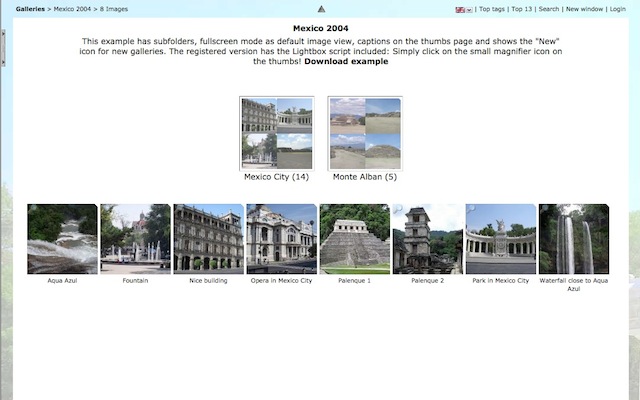
Tiny Web Gallery
Tiny Web Gallery is probably the smallest, most lightweight gallery platform available.If you already have a personal website and you want a quick way to integrate your photos into it, or you just want a gallery tool that doesn’t require a ton of effort to set up, this is the tool for you. It’s “tiny” because it doesn’t require a database or a ton of prerequisites to install; it runs smoothly, stores everything in XML files, but still works like a fully-featured gallery, complete with thumbnails, full-sized photos, support for video and other multimedia, support for batch uploading or locally stored images, and so on.
It’s also completely free for personal and commercial use. It’s surprisingly flexible, especially if you’re not looking for a hulking database or massive gallery platform to install just to host your personal photo galleries.
[clear]
A Few Final Pointers
Whichever gallery platform you choose, make sure that you don’t wind up getting your photos stuck in the same position you would if you used a web service. Part of the beauty of controlling your own photos is that they still belong to you, and if the service goes belly up, you’re not stuck wondering how to get your photos out of it. Not every gallery platform has full export tools — make sure you can get your photos out of it just as easily as you can get them in.
Similarly, if you do have a web host and you’re looking to host your own photo, ping them to make sure they have the prerequisites to support the platform you want to try. They may have one they support, and it may be a better option for you. Don’t just assume that because your web host is good, they have everything needed for all of these to run — they could be running a different version of PHP, or you may have to handle the database creation and administration duties yourself. Make sure you choose the tool that reflects the amount of time you’re willing to put into installing, configuring, and customising it.
All of that said, taking control of your photos doesn’t have to be difficult. Many of these tools make the setup process easy specifically so you don’t have to go with a service that limits the amount of space you have, restricts the types of photos you can upload, or wants a cut of the action if you choose to sell or license your images. Good luck managing your portfolio yourself!
Cheers,
Lifehacker
Got your own question you want to put to Lifehacker? Send it using our [contact text=”contact form”].

Comments